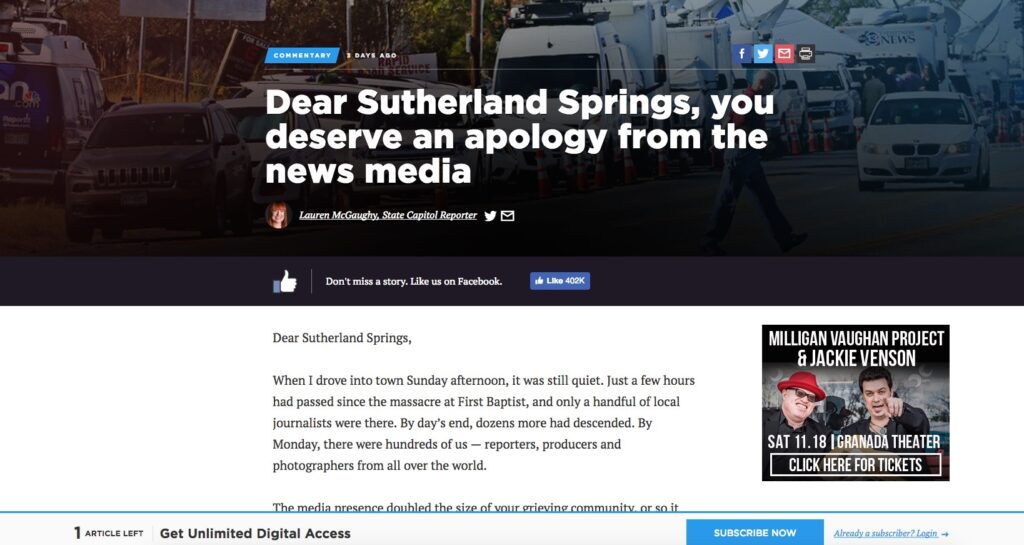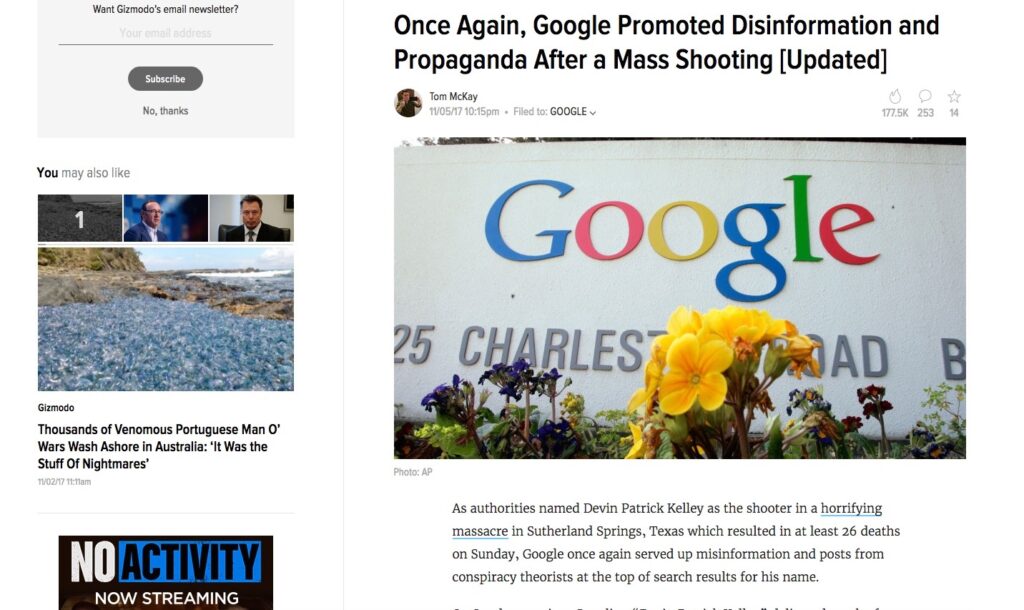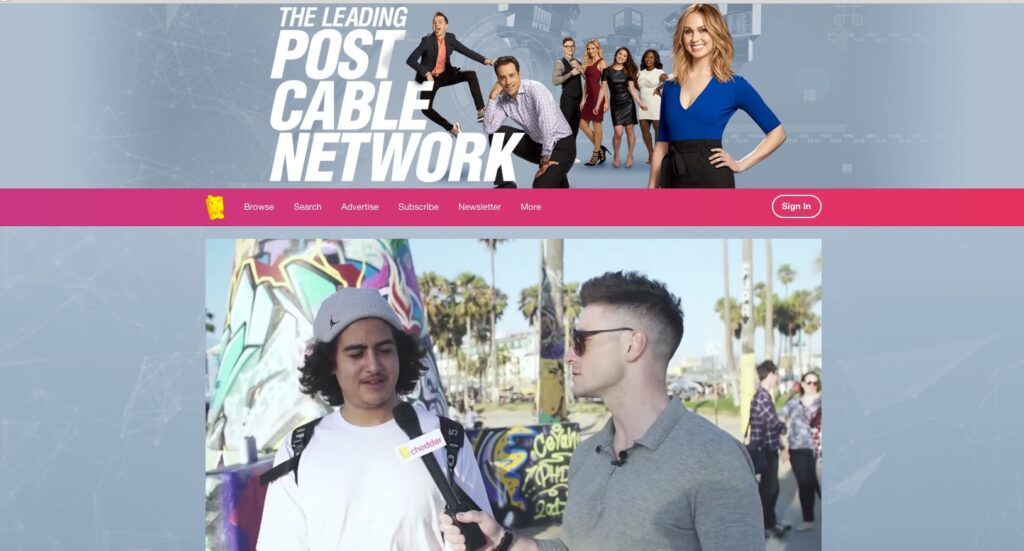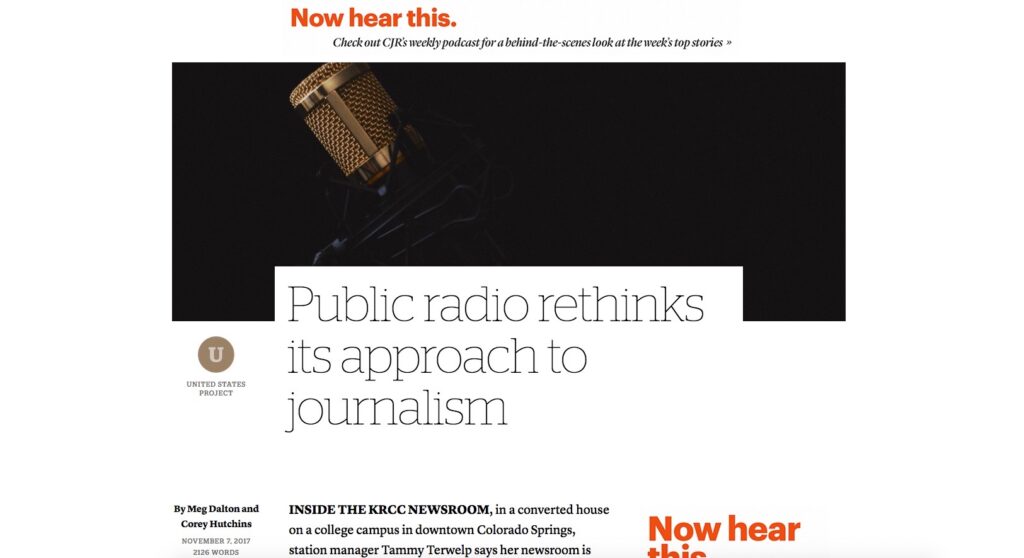Another week, another tragedy that journalists from around the world are sent to cover. This time it is in a small town called Sutherland Springs, Texas. In fact, it isn’t really a town: It is an “unincorporated area” governed by an adjoining community. Once again, it is a case of gun violence. And once again, “the first report was wrong.” But as Gizmodo effectively points out, often these weren’t stories based on fragmentary initial information. No, these were deliberate lies spread to promote somebody’s agenda. Google and Twitter were initially the chief purveyors of these falsehoods.
In the echo chamber of social media, the gunman who systematically killed as many members of a small Christian congregation as he could “was a member of a ‘Pro Bernie Sanders Group,’ a ‘#MUSLIM Convert,’ ‘a radical Alt-left, with potential ties to ANTIFA,’ or named ‘Samir Al-Hajeeda.'” In fact, he was a white guy who had received prison time and a dishonorable discharge from the U.S. Air Force, after being convicted of domestic violence. The Air Force failed to notify civilian authorities of the conviction, allowing the gunman to legally buy the weapons he used to commit mass murder. How did that information come to light? It was reported by a journalist … a real journalist.
Lauren McGaughy of the “Dallas Morning News” wrote a touching “open letter” to the people of Sutherland Springs, apologizing for the way journalists and “media” had overrun their small community, robbing them of their privacy, and complicating an already tragic situation. There has to be a better way to cover events like this, but I don’t know what it is. (Do you have some ideas?) McGaughy said it all when she told the people of this small Texas town, “You’re more than a hashtag.”

You may, or may not, be familiar with
Cheddar. They are an upstart financial news service that aims to provide viewers in their 20s and 30s with information attuned to their needs and style. (They bill themselves as the “Leading Post Cable Network.”) It’s very different from CNBC, Fox Business News and Bloomberg TV. And that’s intentional. Personally, I prefer
Asset-TV. But I’m prejudiced, because NYFA grad Gillian Kemmerer is an anchor and head of U.S. programming there. However, I do watch CNBC’s “
Squawk Box,” where Broadcast Journalism workshop alum
Cameron Costa works. (I can’t play favorites, can I?)
Digiday reports that Cheddar anticipates revenue of $11 million this year. And a chuck of that will likely find its way into the launch of a general news off-shoot. You can bet that it won’t look like conventional network or cable news fare, as the folks who watch those platforms aren’t Cheddar’s target audience.
Public broadcasting outlets are far less flashy, yet as in the classic children’s tale of “The Tortoise and The Hare,” the race doesn’t necessarily go to the fleet of foot. (And if you don’t know one of my favorite childhood stories,
you can find it here courtesy of the U.S. Library of Congress, no less.) Public radio was something of an endangered species, until podcasts came along. That allowed Public radio stations across the United States to get into the content business, where they could “push” programming to subscribers, instead of hoping that the audience would “tune in” to AM or FM broadcasts.
Increasingly Public Radio stations are
banding together to generate news programming relevant their particular region, instead of relying almost exclusively on programs originating from the East or West coasts. It’s a smart move, as it allows these stations to offer unique programming geared to local interests, and to cut costs through collaboration. And “doing more with less” is pretty much the mantra for most journalism outlets today, and will likely remain so for the foreseeable future.



